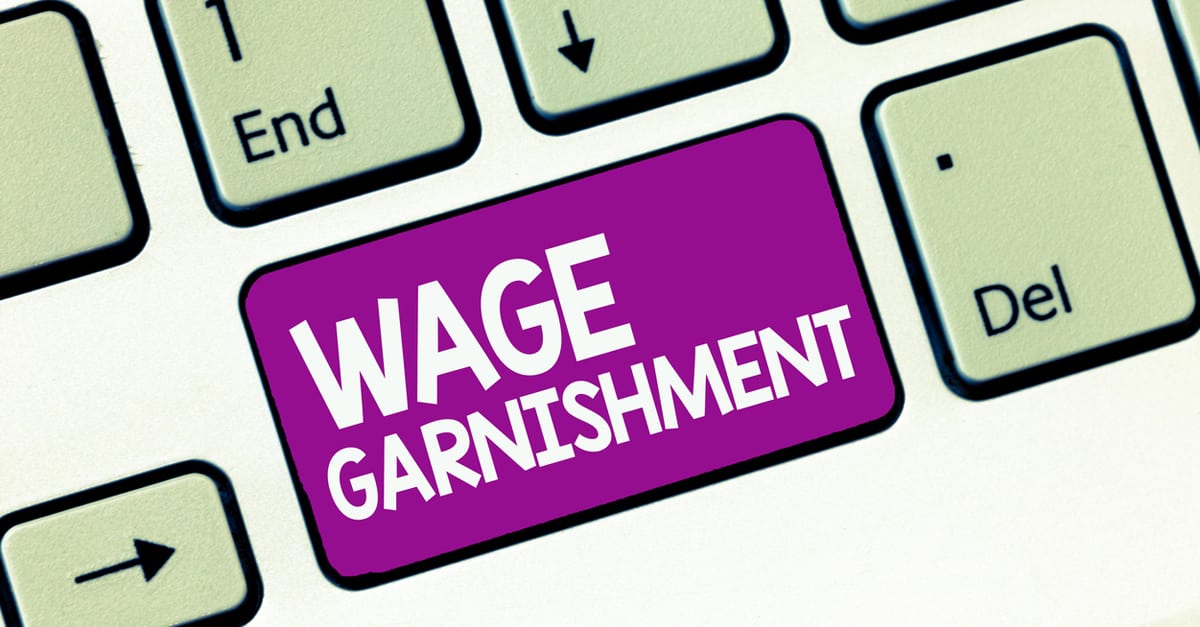
In another article about wage garnishments, we talked about who can garnishee your wages in Canada. Compared to other creditors, the Canada Revenue Agency has the most extensive powers of debt collection. One of their collection tools for unpaid taxes is a wage garnishment.
Table of Contents
What you need to know about a CRA Garnishment
A CRA garnishment can be put in place without a court order. The process begins with a Requirement to Pay notice issued by the Canada Revenue Agency to a third party, such as your employer. The recipient, your employer, is required to deduct or withhold funds from your pay and send the money directly to the CRA.
There are many types of requirements to pay, including:
- A garnishment of salary, wages, commissions, bonuses, expenses etc. owed to an employee
- A garnish of payments due to a contractor or subcontractor for goods and services (including time and labour)
- Redirection of accounts receivable
- Amounts that would otherwise come to you in the form of rent, lease payments, interest income, loan repayments, proceeds from the sale of assets
- CRA can also freeze a bank account.
Will the CRA notify me of a wage garnishment?
A copy of the notice will also be mailed to you, the tax debtor. Prior to that you would have received notices of assessment and collection letters from the CRA. However, the CRA can commence garnishment of your wages without any further formal notice to you if you don’t pay or work with them to make payment arrangements.
Once your employer receives a CRA payroll garnishment notice, they are required by law to comply immediately. Your employer does not need to notify you that they received the order.
Because many people who are experiencing debt problems, whether with the CRA or any creditor, often don’t open their mail, it’s not unusual for them not to be aware their wages have been garnisheed until they go to deposit their cheque or withdraw funds from their bank account.
How much of my wages can CRA garnish?
CRA can garnish up to 50% of your wages if you are an employee, and up to 100% of your income if you are a contract worker. If you are self-employed and bill clients, CRA can have 100% of your accounts receivable redirected in settlement of past tax debts.
What types taxes can be collected via a CRA garnishment?
Laws allow the CRA to issue a requirement to pay or garnishment order for several types of tax debt and government overpayments including:
- Income tax debt
- GST/HST/PST debts
- Withholding taxes
- Customs duties and taxes
- Employment insurance (EI) and Canada Pension (CPP) overpayments
Can you stop a CRA wage garnishment?
If you cannot afford to pay your outstanding taxes, you can stop a CRA garnishment although it takes another piece of federal legislation, the Bankruptcy & Insolvency Act (BIA), to do so.
You have two options to stop a CRA garnishment and eliminate the tax debt:
- File a consumer proposal
- File personal bankruptcy
Both options provide a legal stay of proceedings that will stop the garnishment, even one that is currently in process. Once you file a proceeding under the BIA, your Licensed Insolvency Trustee will send a copy of the filing to your employer who will now have the legal notification they need to stop withholding funds from your paycheque.
If you file a proposal, you will need to make an acceptable tax settlement offer to the CRA. If you file bankruptcy, CRA will file a claim and your tax debts will be eliminated when you receive your discharge.
The process to stop the CRA from garnishing your wages is simple:
- Contact a Licensed Insolvency Trustee for a consultation. Tell us you have a garnishment pending, or already in place.
- Enquire from your employer who should be contacted to stop the garnishment once your file and get their contact information.
- Attend a free consultation during which we’ll collect the necessary information to help you decide if you should file bankruptcy or make a proposal to your creditors and collect everything we need to prepare all the paperwork.
- You sign the bankruptcy or proposal documents and we file these with the government which starts the stay of proceedings. This can often be done the same day or next day if we have all the information we need.
- We’ll immediately notify your employer that you have filed and advise them to stop the garnishment.
The quicker you act, the sooner we can notify your employer to stop taking money from your pay. If your employer has withdrawn funds from your paycheque, we can sometimes get these funds returned if we can notify the correct person at your place of work before they remit the funds to the Canada Revenue Agency.
If you are dealing with the CRA and don’t feel you can pay your tax debts, contact us today for a free, no-obligation consultation.






